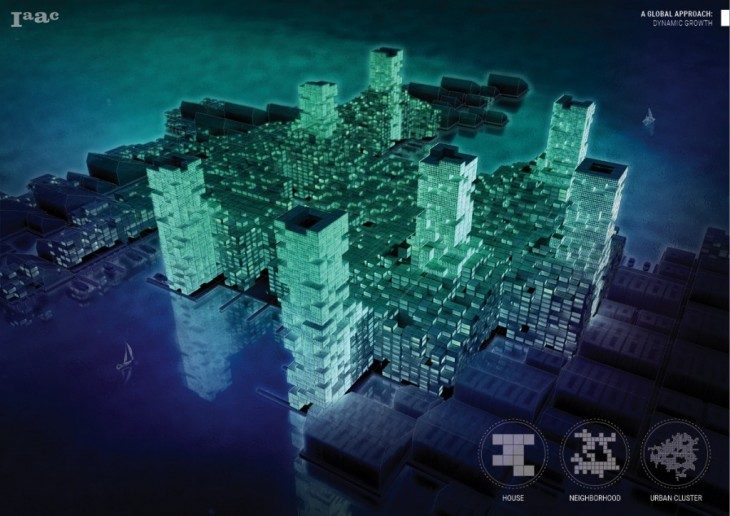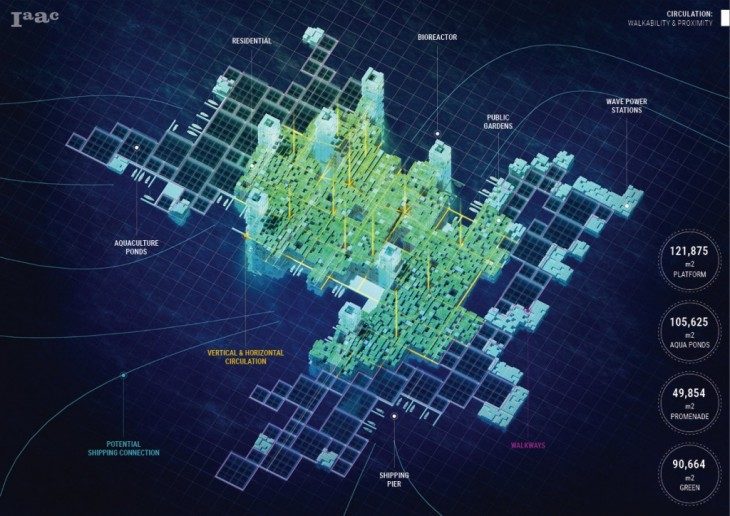Master in City & Technology – Term 2
Studio Name: Internet of Buildings
Total Hours: 40 hours
Senior Faculty: Areti Markopoulou
Faculty Assistant: Alex Mademochoritis
Studio Support Seminar: Cristian Rizzuti
Fabrication Support: Ricardo Mayor Luque – [email protected]
Context & Agenda
Our cities are changing and society is trying to keep up with this rapid pace of transformation as different disciplines are coming together in order to shape the way that the Digital Era of Big Data will radically alter the urban environment. From the Internet of Cities to the Internet of Buildings this studio of IAAC’s Master in City & Technology aims to continue the exploration of our cities’ future by defining new methodologies of designing buildings in the digital era, as well as visualizing the inherent benefits that can emerge by redefining “how” and “for what” built-structures would communicate between each other.
The Internet of Things has paved the way for us to rethink how building communication systems can improve the livability of a built space by creating efficient connections between the user and his/her devices. However, this studio’s goal is to envision the ways in which the already existing infrastructure of Barcelona can be enhanced by creating a network of buildings that are not only self-sufficient but also collaborative in an essential effort of tackling pressing urban issues such as urban atmospheric pollution, urban heat-island effect, traffic congestion, resource insufficiency, economic austerity, material deterioration, sea-level rise, environmental emergencies and others.
Therefore, rather than defining buildings as built structures which act as hubs of contained social activities, urban resources, and information this innovative studio sets out to redefine the role of buildings as single nodes in a larger network of communication and exchange of not only energy and resources but more importantly of data and information related to the overall conditions of the city itself.

source: Luisa Roth – Dynamic Cityscape – IAAC’s MAA02 2016
During the studio, students will be asked to create their own visions of the Internet of Buildings by:
- Conducting an investigation of:
- Barcelona’s Morphology
- Different typologies of Barcelona’s buildings
- State-of-the-art technologies
- Collecting data on the scale of:
- A district
- A neighborhood
- A building
- Designing the:
- Systems and Flows of Communication of the overall network of buildings
- New Building typologies based on the type of communication-actions that would define specific buildings
- The Final Vision of Barcelona
- Fabricating a Physical Model on which they display through Arduino control-boards the data flows and system of communications that defines their network of buildings
- Simulating the exchange of information on an interactive digital platform
Studio Support:
Parallel to the studio, students will have a Studio Support Seminar of 20 hours on Physical Computing, during which they will develop all the necessary skills to physically compute and visualize the technological interaction as well as the exchange of data/information between buildings on a large physical model.

source: Luisa Roth – Dynamic Cityscape – IAAC’s MAA02 2016